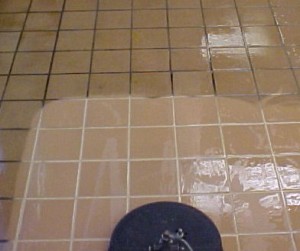
Your car is an important part of your life. You probably spend at least one part of every day sitting in it, but yet we don’t seem to keep it as clean as we do our home. It can be a major effort to clean your car yourself, but it’s a necessary evil to keep your paintwork looking as fresh and shiny as it did the day that it left the dealership. Here are our top tips for cleaning your car like the professionals do.
Exterior
- Firstly, never clean your car in direct sunlight, heat or after a long drive – when the car is hot, the wash will leave water stains and the strength of the chemicals will be affected.
- Clean the dirt off your car using a hose pipe before you wash it with any products – this will help get any dirt off that could scratch the paintwork as you wash.
- After you have rinsed the car, start by cleaning the wheels as this is the dirtiest part.
- As you clean your wheels, if you use a wheel cleaner, always check that it can be used on your type of wheel- special care should be taken with alloys.
- When you move onto the windows, remember to roll them down before you clean – the top of the window has the most dirt and your hard work will be undone if you don’t clean it.
- When you have cleaned the glass, buff it using a micro fibre cloth.
- When you have washed the car, do not let it air dry or take it for a drive to dry it, dry it using a chamois cloth in a blotting motion – doing the former will leave water marks on the paintwork.
- Before waxing the car, use a clay brick to get stubborn marks off the paint.
- Wax the car once you have cleaned it to protect it from future stains (and give yourself an easier job next time you come to wash the car)
Interior
- Lift out the mats and use a stiff brush to loosen the dirt before you vacuum them – this also works on the carpet.
- Use a foam brush (available from craft shops) to dust the air vents.
- Use a toothbrush and a small amount of dish soap to scrub the dirt embedded into the vinyl on your interior door and other surfaces.
- Use a dry toothbrush to get into the seams between the window and your door.
- Refrain from using silicone-based sprays inside the car – they will make it shiny but they will also make it slippery, which is potentially very dangerous, particularly on the pedals.
- Use baby wipes to clean your dashboard and steering wheel.
General tips
- Do the interior and exterior on separate occasions if you have to – don’t rush to do them both at once.
- If you have concerns about which cleaning products you can use in your car, refer to the owner’s manual.
- As the car has so many different materials, it’s always best to use a specific cleaner for each rather than a general cleaner.
- If you can’t avoid washing your car in the sun, do it in sections to avoid streaks.
- Keep your car clean by storing a plastic bag dispenser in the glovebox and taking your rubbish out often.
- Take the mats out of your car weekly and give them a shake.
Keeping your car clean can increase the value of your car when you go on to sell it. A dealership is more likely to take a car that has been kept in good condition by its owner than they would a dirty car. Remember that if you have sold your car you need to inform the DVLA.




 mall space on the world wide web! Please bear with us as we set up this new venture and start producing the quality articles you’ll enjoy reading. What are we aiming to talk about? Well, we hope to share expert tips on cleaning for all sorts of rooms/situations/items that we’ve gained and gleaned from over 20 years experience in the cleaning industry.
mall space on the world wide web! Please bear with us as we set up this new venture and start producing the quality articles you’ll enjoy reading. What are we aiming to talk about? Well, we hope to share expert tips on cleaning for all sorts of rooms/situations/items that we’ve gained and gleaned from over 20 years experience in the cleaning industry.